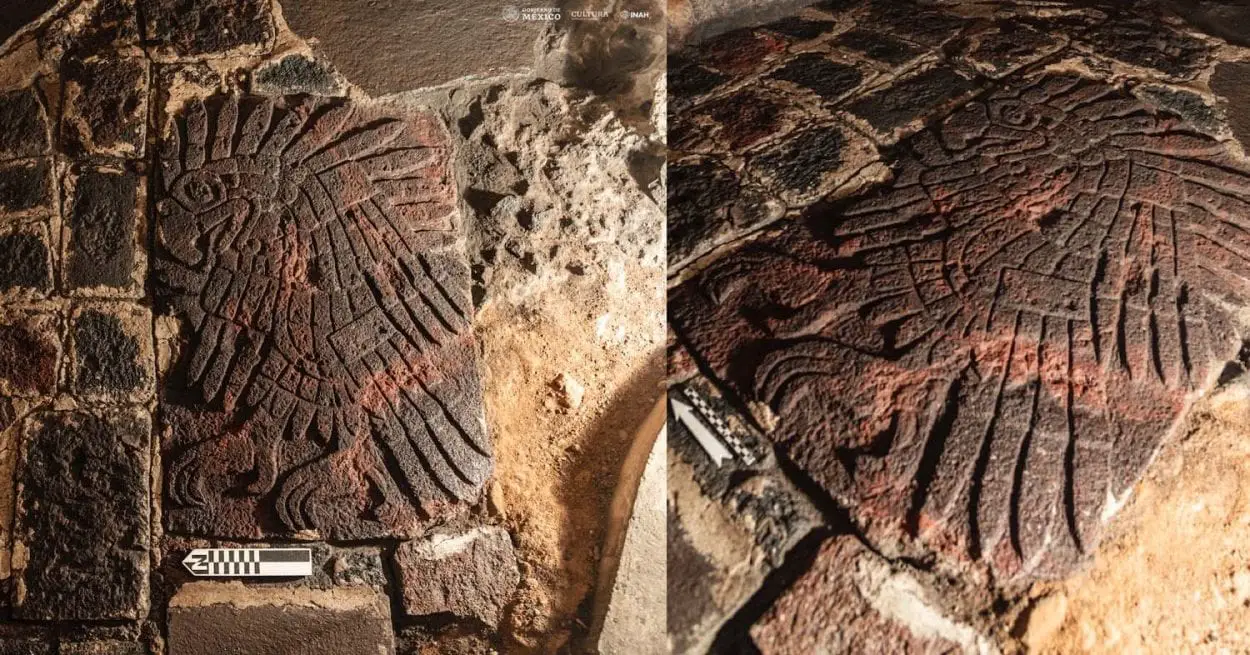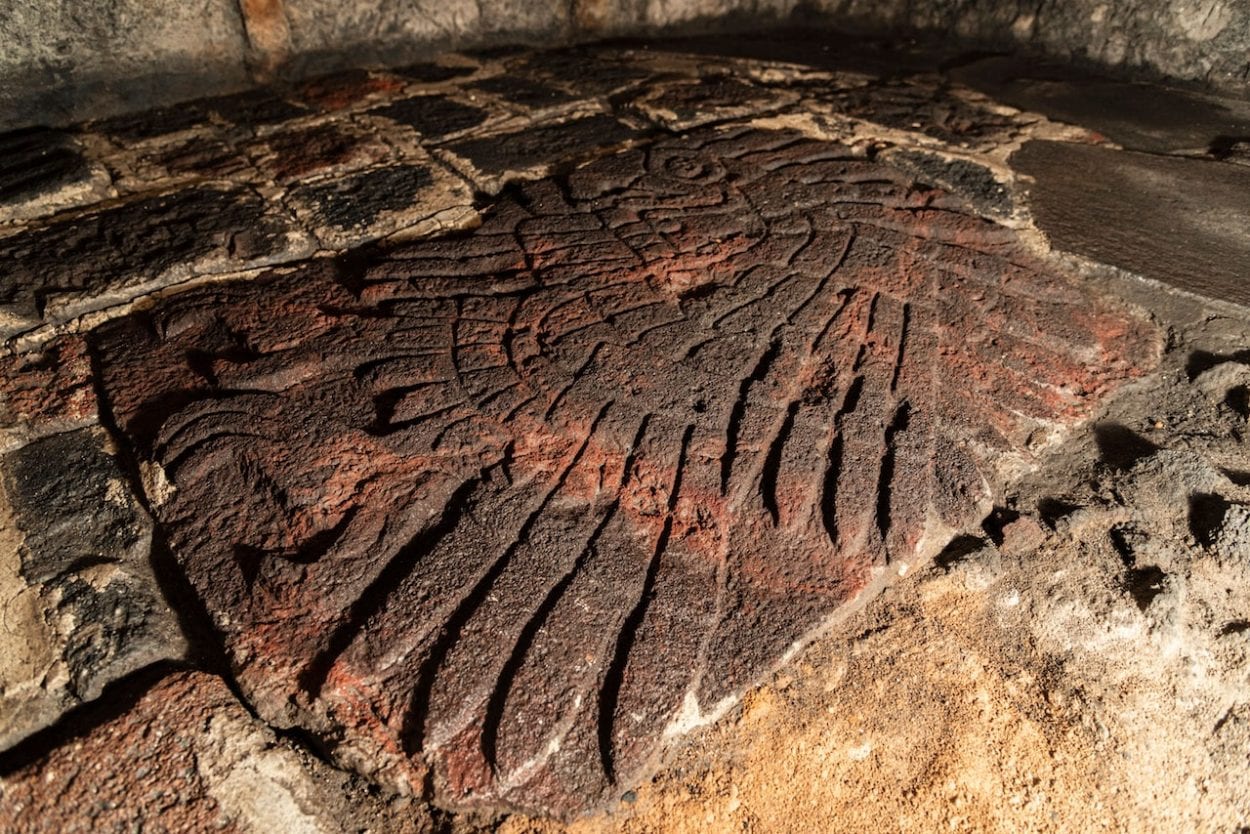A team of archaeologists from the Instituto Nacional de Antropologia e Historia (INAH) have announced the discovery of a bas-relief depicting an American golden eagle (aquila chrysaetos canadensis).
For the Mexica, the bird of prey was closely related to war and sacrifice, while being considered a nahual of the sun and, therefore, also of its tutelary god, Huitzilopochtli.
The relief was excavated at the foot of the Templo Mayor (the main temple of the Aztec city of Tenochtitlan in present-day Mexico City), in the central axis that crosses the ‘chapel’ of Huitzilopochtli and the monumental sculpture of the goddess Coyolxauhqui.
It is also positioned close to the Cuauhxicalco, a circular building whose name translates as “place of the eagle’s gourd”, where, according to documents from the 16th century the ritual cremations of the Tenochca rulers were carried out.
Studies of the relief suggests that it dates to around AD 1490 to 1467, during the reign of Motecuhzoma Ilhuicamina, the second Aztec emperor and fifth king of Tenochtitlan.

Carved on red tezontle into the temples floor, the relief measures 1.06 meters long, by 70 centimetres wide, and is the largest in a set of 67 similar depictions found so far in the Templo Mayor. The relief was first unearthed in February 2020, but only now have details of the discovery been made public.
Archaeologists Rodolfo Aguilar Tapia from the National School of Anthropology and History said: “This floor is unique in the entire Templo Mayor, as it contains bas-reliefs that allude to the dual conception of the building. On the south side, where we are exploring, there are elements like this eagle, linked to the mythical cycle of the birth of Huitzilopochtli; while to the north, the bas-reliefs located earlier —the first in 1900 by Leopoldo Batres, and the later by the PTM and the Urban Archeology Program (PAU) – contain representations associated with Tláloc, the water cycle and the regeneration of corn” .
Header Image Credit : Mirsa Islas







